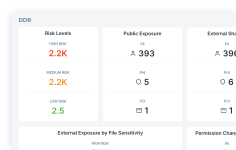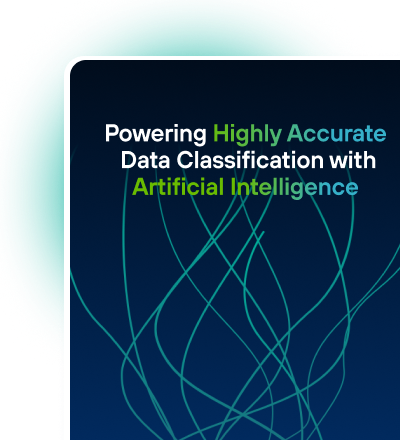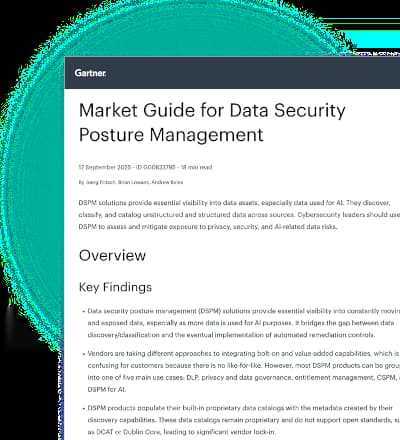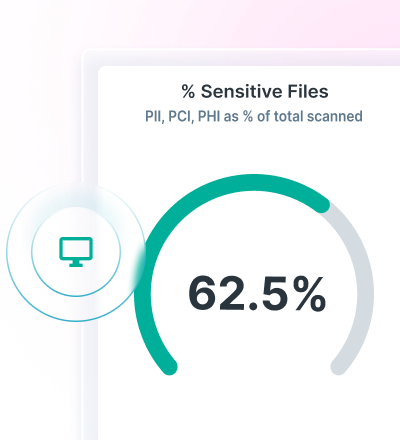Key Components of Data Access Governance Software Every Enterprise Needs
0 min read

Tim Herr
We all know by now that the free movement of data across ecosystems, users, and endpoints does as much to multiply risk as it does to boost productivity. Protecting the sensitive data that represents your company’s lifeblood requires ensuring that only the right users have access to the right data at the right time—and that access remains aligned with policy as environments evolve.
What we’re talking about here is data access governance (DAG). There are plenty of conceptual discussions of DAG available on the web, but much information on the subject fails to provide actionable recommendations for how to get started.
Here we’re concerned with concrete answers to the question: What security products and data access governance software do you need to effectively govern data access?
This article breaks down seven essential software solution categories every mature data access governance strategy should include.
1. Data Security Posture Management (DSPM)
Role in DAG: Once identity and infrastructure layers are defined, organizations need visibility into where sensitive data actually lives. Forcepoint DSPM continuously discovers and classifies data across cloud, SaaS and on-premises environments to reveal exposure risks and ownership gaps.
Key Capabilities: Data discovery, classification and sensitivity tagging, access and exposure mapping, continuous posture scoring, prioritized remediation workflows.
Vendor Examples:
- Forcepoint DSPM: Unified visibility and selective scanning for structured and unstructured data, works in conjunction with Forcepoint DLP and policy enforcement
- Cyera Platform: Agentless data discovery and contextual risk scoring
- Securiti DSPM: Combines data classification with privacy governance
- Varonis Data Security Platform: Offers visibility and access analytics for SaaS and on-premises data
Why It Matters: You can’t govern what you can’t see. The best DSPM software solutions provide the data visibility that makes data access governance software measurable and actionable.
2. Data Loss Prevention (DLP)
Role in DAG: DLP enforces policies that prevent unauthorized sharing, transfer or storage of sensitive data. It operationalizes the rules defined by your governance framework across endpoints, cloud and email.
Key Capabilities: Content inspection and classification, contextual policy enforcement, endpoint and cloud connectors, user coaching and adaptive blocking, integration with IAM and CASB.
Vendor Examples:
- Forcepoint DLP: Leading risk-based protection across Microsoft 365, endpoints and networks
- Broadcom Symantec DLP: Mature enterprise coverage with customizable policies
- Microsoft Purview DLP: Integrated across the Microsoft 365 suite
- Trellix DLP: Combines endpoint and network-level enforcement
Why It Matters: Data governance requires not just visibility but control. DLP ensures that policies translate into real-time enforcement wherever data moves, serving as a critical function within any data access governance software ecosystem.
3. Cloud Access Security Broker (CASB)
Role in DAG: Collaboration tools like SharePoint, OneDrive and Teams make data sharing effortless – sometimes too effortless. CASB monitors and enforces policies as users interact with cloud applications, reducing oversharing and shadow IT risk.
Key Capabilities: App discovery and risk scoring, data-in-transit controls, encryption or tokenization, inline and API-based policy enforcement, integration with DLP and IAM.
Vendor Examples:
- Forcepoint Cloud App Security: Provides unified policy control and visibility across sanctioned and unsanctioned apps, tightly integrated with Forcepoint DLP
- Netskope Cloud Security Platform: Leader in inline controls and real-time user context
- Palo Alto Networks Prisma Access: Extends CASB visibility into Secure Access Service Edge (SASE) deployments
- Cisco Cloudlock: Lightweight CASB for SaaS app discovery and compliance
Why It Matters: Cloud collaboration is a major blind spot for data exposure. CASB extends data access governance software into the cloud for everyday apps employees use most.
4. Data Detection and Response (DDR)
Role in DAG: Even with DLP, some data misuse will slip through. DDR tools detect and respond to abnormal or high-risk data activities in real time. They focus on what happens after access is granted.
Key Capabilities: Monitoring for anomalous data movement or downloads, correlation with behavioral signals, alerting and automated response workflows (such as quarantining files or suspending sessions).
Vendor Examples:
- Forcepoint DDR: Monitors data access patterns across SharePoint and Microsoft 365, triggering contextual enforcement
- Cyberhaven Data Detection & Response: Offers data-centric analytics that map exfiltration attempts
- Varonis Threat Detection & Response: Correlates data access events with user activity
- Securonix Unified Defense SIEM: Integrates UEBA with data event detection
Why It Matters: DDR converts passive visibility into action. It ensures that data access governance software remains responsive to emerging threats, not just defined policy.
5. User and Entity Behavior Analytics (UEBA) / Insider Threat Protection
Role in DAG: The final layer of governance focuses on why access happens. UEBA and insider-threat tools analyze normal user and entity behavior to identify deviations that might signal malicious intent, compromised credentials or careless misuse.
Key Capabilities: Baseline behavioral modeling, risk scoring for users and service accounts, anomaly detection, and integration with DLP or DDR systems for automated response.
Vendor Examples:
- Forcepoint Risk-Adaptive Protection: Monitors user activity in context, combining policy data with behavioral analysis to flag risky actions
- Securonix Analytics Platform: Seen as a leader in cloud-native UEBA and insider-risk detection
- DTEX InTERCEPT: Offers endpoint behavioral analytics focused on workforce monitoring
- Microsoft Insider Risk Management: Leverages Microsoft Graph signals for context-aware investigation
Why It Matters: Even well-defined access controls can’t prevent every risky behavior. UEBA closes that loop by correlating intent and action in real time, strengthening data access governance software defenses.
6. Identity and Access Management (IAM)
Role in DAG: IAM defines who users are, how they authenticate and what systems or apps they can access. This forms the foundation of any access governance strategy. Strong identity controls establish a first line of defense and feed critical context to downstream data protection tools.
Key Capabilities: Single Sign-On (SSO), Multi-Factor Authentication (MFA), Role-Based Access Control (RBAC) and automated onboarding/offboarding workflows.
Vendor Examples:
- Microsoft Entra ID (formerly Azure AD): Deeply integrated into Microsoft 365 and Azure ecosystems
- Okta Identity Cloud: Identity-as-a-Service (IaaS) with adaptive access policies
- Ping Identity: Enterprise IAM with standards-based federation and API protection
Why It Matters: IAM answers who can access what. That clarity helps establish a consistent baseline for other data controls such as DSPM or DLP within data access governance software ecosystems.
7. Cloud Infrastructure Entitlement Management (CIEM)
Role in DAG: As cloud adoption expands, CIEM fills the visibility gap across infrastructure permissions. It discovers and manages entitlements for users, groups and service accounts across IaaS and Platform-as-a-Service (PaaS) platforms such as AWS, Azure and Google Cloud.
Key Capabilities: Discovery of cloud identities and privileges, detection of excessive or unused permissions, risk scoring of entitlements and automated remediation.
Vendor Examples:
- Wiz: Cloud-native security platform offering CIEM within its broader Cloud-Native Application Protection Platform (CNAPP) capabilities.
- Orca Security: Combines posture management and entitlement visibility across multi-cloud.
- Sonrai Security: Focuses on identity-to-data mapping and privilege drift detection.
Why It Matters: CIEM provides the bridge between infrastructure security and data governance by showing how over-provisioned permissions can expose critical data—another essential function of data access governance software.
Building a Unified Data Access Governance Architecture
Each of these software solutions has their own critical DAG use cases. But the power lies in their integration:
- DSPM reveals what data exists and where it’s exposed.
- DLP enforces the policies that govern that data.
- CASB extends protection to cloud-based business apps.
- DDR monitors for misuse and triggers response.
- UEBA interprets behavior to detect intent and insider risk.
- IAM defines who can access systems.
- CIEM manages cloud entitlements for infrastructure and service accounts.
Together they form a governance fabric—continuous visibility, control, monitoring, and feedback that keeps data protection aligned with business risk.
Forcepoint Data Security Cloud unifies these functions across Microsoft 365 and hybrid environments. By correlating identity, data sensitivity, and behavior, Forcepoint delivers dynamic, risk-aware control instead of static, one-size-fits-all policies.
Conclusion: From Oversharing to Oversight
Effective data access governance requires visibility, context, and control that extend across identity, infrastructure, and information. The seven solution categories outlined above provide the structure to achieve that.
By combining strong IAM and CIEM foundations with Forcepoint’s intelligent data access governance software, organizations can evolve from reactive protection to proactive oversight—preventing oversharing, detecting anomalies and maintaining trust across every data touchpoint.
Learn how Forcepoint can help you implement more robust data access governance today.

Tim Herr
Read more articles by Tim HerrTim serves as Brand Marketing Copywriter, executing the company's content strategy across a variety of formats and helping to communicate the benefits of Forcepoint solutions in clear, accessible language.
 How to Strengthen Data Access Governance with Forcepoint DSPMWatch the Video
How to Strengthen Data Access Governance with Forcepoint DSPMWatch the Video
X-Labs
Get insight, analysis & news straight to your inbox

To the Point
Cybersecurity
A Podcast covering latest trends and topics in the world of cybersecurity
Listen Now









